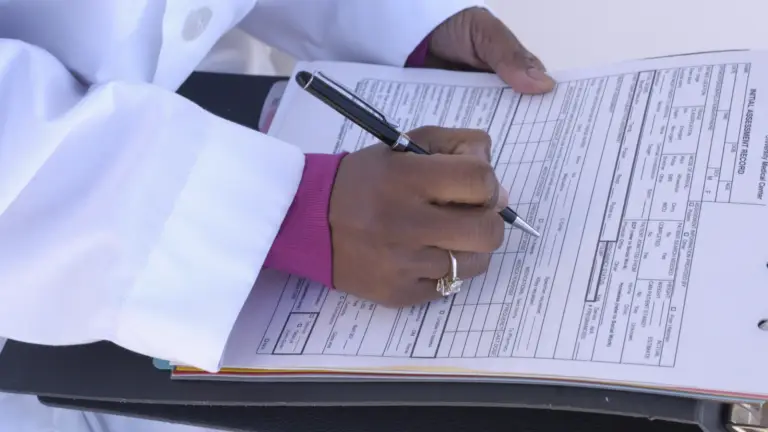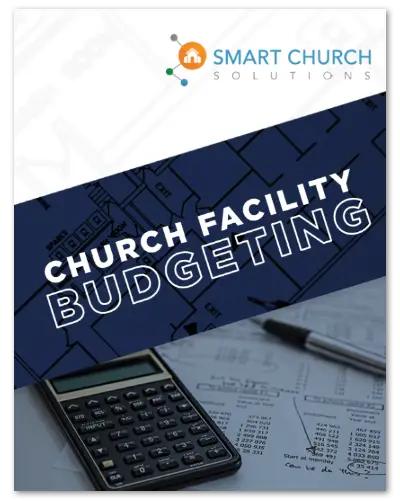The following article was published in a print publication for The Church Network. Small edits have been made to the article below.
Is your church facility healthy? That may sound like an odd question unless you have ever hung around me. If you have, you know I am passionate about the “health” of church facilities. I strongly believe in what we refer to as Facility Stewardship and the theology that God has entrusted us with buildings and assets we are to care for.
Let me ask you a few quick questions to consider before we dive in:
- Do you know the health of your church facility?
- When was the last time you benchmarked operational costs compared to other similar facilities?
- Have you assessed best practices and the following steps to maintain your facility in the future?
- Do you have a long-term sustainable health plan for your facility?
- Bonus question: When I asked about a healthy facility, did you think more about the cleanliness of the facility or the health of its occupants than the condition of the facility?
Facility Health In Terms Of Cleanliness & Safety
For many churches, the term healthy immediately conjures thoughts of clean and safe facilities. Both are a part of the health of your church facility, as they also impact the health and well-being of your congregation and guests. In light of that, let’s start with this concept before we dive deeper into other health issues.
A healthy facility is a safe and hygienic environment that supports the well-being of the people who use it. It encompasses various aspects of a building, including its design, construction, operation, and maintenance (more on this later). A healthy facility should be free from hazards, pollutants, and contaminants that can cause harm to people’s health. It should have proper ventilation, lighting, and temperature control to provide a comfortable and healthy indoor environment.
A healthy facility should also support healthy behaviors and practices. It should also have policies and procedures that promote health and safety, such as hand-washing protocols, regular cleaning schedules, and emergency preparedness plans.
Benefits of a Healthy Facility
Having a healthy facility in these terms offers numerous benefits:
- Improved health outcomes: A healthy facility can reduce the risk of illnesses, injuries, and accidents. It can also promote healthy behaviors and practices that can improve physical and mental well-being. Regular cleaning and disinfecting of surfaces and high-touch areas such as doorknobs, light switches, and keyboards can help prevent the spread of germs and reduce the risk of infections. This is particularly important in shared spaces such as offices and schools, where multiple people come into contact with the same surfaces throughout the day.
- Increased productivity: A healthy facility can create a comfortable and conducive environment that promotes engagement with your guests/volunteers and a pleasant workplace. Staff (and volunteers) working in a healthy facility will likely be engaged, motivated, and productive.
- Enhanced reputation: A healthy facility can enhance a church’s reputation by demonstrating its commitment to health and safety. Making the environment as healthy as possible is a form of caring for our guests (and even a type of evangelism).
- Cost savings: A healthy facility can reduce costs, increase energy efficiency, and reduce maintenance and repair costs.
- Increased safety: A clean building increases safety. Cluttered and dirty spaces can be hazardous, with objects lying around that can cause slips, trips, and falls. Regular building cleaning and maintenance can help identify and address potential hazards, reducing the risk of accidents and injuries.
Assessing Facility Health Is Like Going To The Doctor
Question: Is cleanliness all there is to the health of a facility?
Answer: No — a far cry from it.
Saying cleanliness is all there is to a healthy facility is kin to saying that when you go to the doctor for your annual physical, your doctor only needs to look at your ears and fingernails. Yes, they are good hygiene practices (conditions or practices conducive to maintaining health and preventing disease, primarily through cleanliness). But, if that was the only aspect our physician considered (and told us that we were healthy), we would cry malpractice.
The same applies to our ministry facilities. While cleanliness may be next to Godliness, it is not the whole story.
Just like your physical health, understanding your facility’s health is critical if you plan to use your building for years to come. Assessing your facility can be compared to an annual doctor appointment for your physical health. Both are critical benchmarking assessments that include previous years’ comparisons and suggestions for improving your health. Additionally, they are essential to maintaining good health and longevity.
Therefore, to understand the condition of your facility a bit further, here are a few questions to ask yourself:
- Do you know the amount of deferred maintenance you have on your campus?
- Are you spending too much on utilities?
- Do you have enough staff to address your facility’s needs?
- Are you investing enough to keep up with the natural rate of deterioration?
- Do you know the national benchmark for custodial and general maintenance best practices?
Steps To Achieving A Healthy Facility
Achieving and maintaining a healthy facility requires a multi-faceted approach that involves various stakeholders, including facility managers, staff, occupants, and external partners. Here are some steps that can help achieve and maintain a healthy facility:
I hear a lot from pastors, business admins, facility managers, and others who ask me: “Hey, Tim. How do we get started with Facility Budgeting?” It is a universal concern.
Let’s take a 30,000-foot level view of the most effective components to consider as part of budgeting and, in turn, the sustaining establishment of a healthy facility. When budgeting for your facilities, three primary buckets need to be accounted for:
1. Operational
The operational bucket includes utilities, janitorial, general maintenance, and staffing. Budgeting these areas will be critical to get right. This means that you are not spending too much on utilities and making sure you are spending enough in the other areas to keep up with the natural rate of deterioration. Here are some rules of thumb that represent “best practices” for churches:
- Utilities – $1.00-1.50/SF annually. If you are over $1.25/SF, you may want to consider an energy audit or a review of your HVAC controls. Fifty percent or more of your energy consumption is attributed to HVAC, and the best way to reduce that is through proper “behavior,” which can be assisted with proper controls.
- Janitorial (labor, material, paper products, major cleaning like carpet extractions, window cleaning, etc.) should be in the $1.50-$2.50 range annually.
- General Maintenance – If you are budgeting below the national average of $2.25-$3.00/SF, this should be re-looked at. We have found that if a lack of general maintenance is present, the likelihood of deferred maintenance increases. In most cases, $1 not spent on general maintenance will cost 3-4 times more in the future.
- Staff – Based on national surveys by our firm and IFMA, we believe the number of facility staff for a well-run organization is one Full Time Facility Staff Employee dedicated to the general maintenance of the facility for every 35,000 SF.
2. Deferred Maintenance
These items should have been addressed prior but, for whatever reason, have not been accounted for. We have found that when insufficient general maintenance is budgeted, the likelihood of deferred maintenance increases. This is the same for staffing, too.
As stated above, the cost of deferred maintenance can be 3 to 4 times the cost of the initial general maintenance. Additionally, in 2022, our Facility Stewardship Specialists physically assessed several million square feet of church facilities and identified nearly $60 million of deferred maintenance at an average of $25/square foot.
So, you do the math. Take your facility’s square footage and multiply it by $25. Do you have that much money in a capital reserve account? I love this quote by Coach John Wooden: “If you don’t have time to do it right the first time, when will you have time to do it over.” The same applies to money and deferred maintenance.
3. Capital Reserve
We have found that a church needs $2-3/SF annually to keep up with the real cost life cycle planning. Capital replacement is not an “if” consideration but rather a “when” and “how much.” While the $2-3/SF is a reasonable way to start planning, the best way is to do “line-item” projections for each asset with a life cycle. If you have not already done so, check out our eSPACE Life Cycle Calculator to help you get started. We also have a free eBook on this topic.
Understanding Facility Condition Assessments
Let’s go back to my analogy of an annual physical. In the world of Facility Stewardship, this is what is referred to as a Facility Condition Assessment. So, what is a Facility Condition Assessment?
By definition, a Facilities Condition Assessment is the process of developing a comprehensive picture of physical conditions and the functional performance of buildings and infrastructure. It is analyzing the results of data collection and observations and reporting and presenting those findings.
According to the Association of Physical Plant Administrators, a trade organization focused on educational facilities, “the main objective of the facilities condition assessment is to measure the condition and functionality of buildings. Specific objectives of the comprehensive assessment methodology include determining the needs for renewal or replacement of building and infrastructure systems ( heating/cooling, electrical, exterior envelope, etc.) and system components (cooling tower, heat exchanger, chiller, pumps, etc.) and guiding the analysis of good decision capital project options, including renovation or modernization.”
At a minimum, a Facility Condition Assessment should include lists of deferred maintenance, review life safety matters and OSHA considerations, analyze the operational budget efficiencies and staffing levels, and consider the life cycle ramifications. Assessing a facility is more than just observing the technical or analytical components. Church facilities have emotion and a kingdom purpose that requires more than a technical approach. Therefore, a Facility Condition Assessment must include a fresh eyes/first impression assessment, cost benchmarking, staffing levels, accounting of deferred maintenance, and life cycle projections.
Time to Take Action
Having all of this information is great. However, it needs to be actionable, and you need to take the steps. If the doctor tells you that you have high blood pressure and need to cut out sodium and lose 20 pounds, that is great information. But if you do not take action, it is just information.
It is time to take the health of our facilities seriously. Schedule a call with our team to learn more about our Facility Condition Assessment and Consultations.








